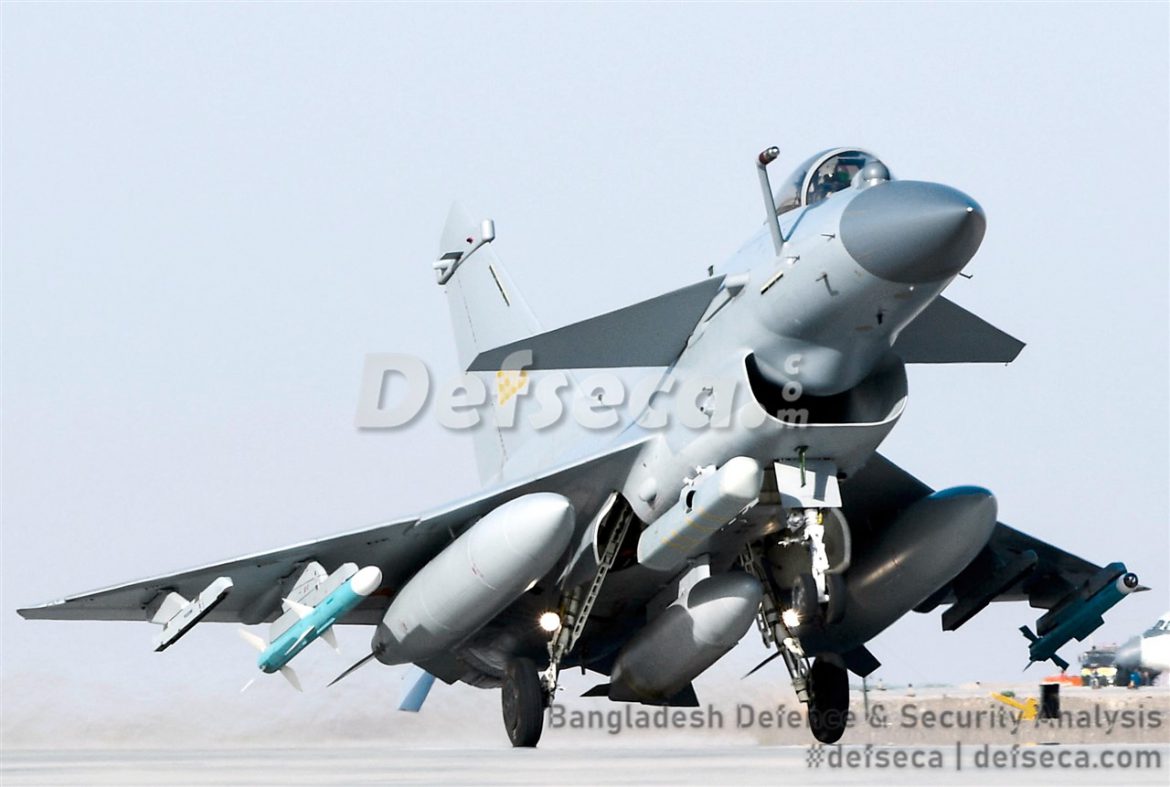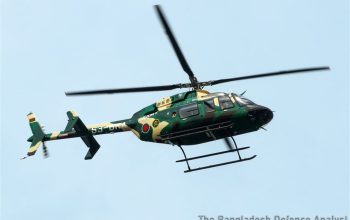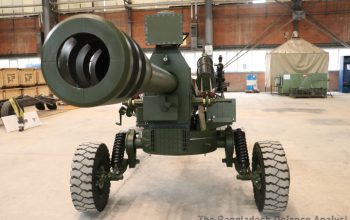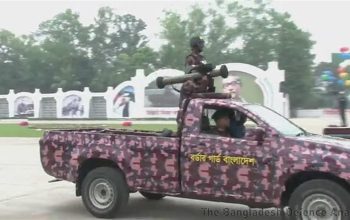The Bangladesh Air Force operates three squadrons of F-7 series single-engine powered interceptor fighters. It also operated a squadron comprised of A-5C and FT-6 ground attack aircraft.
Essentially the Bangladesh Air Force needed to replace four squadrons of aircraft with a new generation fighter aircraft capable of fulfilling multi-mission requirements with maximum number of payload whilst still being powered by a single engine.
The Air Force had in front of it options such as the F-16, JAS-39, J-10 and JF-17 (FC-1). The Russians do not manufacture any single engine fighters so they proposed to sell the MiG-35 to become the “backbone of the Bangladesh Air Force fighter fleet”. For a while it was an option liked within the air force but the complexity and cost of operating a multi-engine platform combined with notorious Russian after-sales support experience irked the air force back in to single-engine powered aircraft aforementioned.
Of these the F-16 can be said to be the most war experienced and capable single-engine fighter design ever produced by any Western country. Its first flight was in 1974 making it the grandfather of fighters in the pool of shortlist. The American’s increasingly wanting to get a share in Bangladesh’s arms procurement market proposed the F-16 along with AH-64E Apache Guardian attack helicopters. But before Bangladesh can obtain any sophisticated American arms it has to sign the General Security of Military Information Agreement (GSOMIA) and Acquisition and Cross-Servicing Agreement (ACSA). It is a long drawn out process that would take at least four to five years to complete making the purchase of F-16s unrealistic for an air force that needs new fighters “yesterday”.
The Bangladesh Air Force has been looking at the option to purchase Saab JAS-39 Gripens as an alternative to the F-16. The aircraft is highly capable in its own right and together with the benefit of a network centric infrastructure it is being advertised as the “wings of a nation”. Its short takeoff and landing capacity alongside economic cost of operations make it cheaper to operate out of all the Western fighters available to the Bangladesh Air Force for sale.
There is a problem, the Bangladesh Air Force cannot absorb more than one squadron of fighter aircraft each time. The Swedish asked the Bangladesh Air Force at least purchase 32 fighters in the first contract. This is a wholly unsustainable condition as the resources of Bangladesh would not permit the purchase of more than a squadron of such expensive fighter aircraft. This choice was dropped. When the Bangladesh Air Force Chief Air Chief Marshal Masihuzzaman Serniabat visited Sweden last year to attend the International Forum for the Military Simulation, Training & Education Community (ITEC) 2019’ in Stockholm he discussed the possibility of purchasing Saab’s AEW&CS aircraft. Sources stated the Bangladesh Air Force was encouraged by the Pakistan Air Force’s success with using these fighters during the 2019 conflict with India.
So now with the Western fighters out of the way we have two interesting offerings from China. They are the JF-17 and the J-10C.
The JF-17 is a joint-collaboration project between the Chengdu Aircraft Corporation (CAC) of China and the Pakistan Aeronautical Complex (PAC) intended to replace the Pakistan Air Force’s large fleet of fighters such as the A-5C, F-7P/PG, Mirage III and Mirage V. The light fighters can be used to perform multiple roles including ground attack, interception, maritime strike and aerial reconnaissance.
China successfully exported one squadron of JF-17 Block II fighters to neighbouring Myanmar. The Burmese air force ordered the first 16 fighters in 2015 to replace its aged F-7 and A-5 fleets. Due to Myanmar’s fragile political and economic situation Chinese and Russian fighters are the only viable option. This is not the case for Bangladesh, which already uses the most advanced F-7 variant manufactured by the Chengdu Aircraft Corporation (CAC). It wants something more capable as a platform. But we’ll get to that in a moment.
The JF-17 for its price tag is impressive. It does exactly what its built for – a light, cheap, multi-role capable fighter that can be produced en masse to replace vast fleets of fighters used by developing countries including Pakistan. The strategy behind the employment of JF-17 is based on numerics. It is simply not an option for an air force like that of Bangladesh’s given the country lacks adequate number of airbases, strategic depth and pilots.
The Bangladesh Air Force instead wants to operate roughly a dozen combat aircraft squadrons that includes a mix of heavy twin-engine multi-role fighters, one squadron of maritime strike fighters, ground attackers and single-engine light fighters.
Given the recent advances in indigenous engine technology development China has indicated it is finally ready to export the J-10C to the Bangladesh Air Force. Several Chinese delegations visited Dhaka over the past couple of years to propose cooperation in aerospace trade and technology transfer. Bangladesh Air Force has contracted a Chinese firm to build an aerial munitions MRO and manufacturing plant for the first time in the country. This will enable the air force to maintain the large number of Chinese munitions in its war inventory.
Given that the Chinese aerial munitions plant is on the way there is very little scope for others to gain an opportunity. Moreover Bangladesh cancelled Beijing’s bid to build a strategic deep sea port in the Bay of Bengal. This left the Chinese irked with Bangladesh’s government and the J-10C purchase would serve to appease Beijing in a way as they would have a long-term security involvement with Dhaka at least for the duration of such major arms programs.
So with geo-politics out of the way I can tell you the J-10C is a competent fighter aircraft. It may be somewhat underpowered compared to the Rafale but it makes up for it with a strong showing in the sensors and armaments department. Equipped with AESA fire control radar, electronic warfare suites and targeting pods the J-10C also has the ability to carry a payload of over 7,000 kg’s of external stores including fuel and ordnance. The J-10 fighters can carry the latest Chinese air-to-air munitions such as the PL-12 and PL-15. This will put the fear of God unto the enemies of Bangladesh Air Force surely! The ability to use the full array of China’s new generation precision guided munitions and a secondary maritime strike capability makes the J-10C the most attractive option for the Bangladesh Air Force.
Defseca.com Team expects the air force to eventually purchase three to four squadrons of J-10 fighters spanning 15-20 years. The fighters will help transform the Bangladesh Air Force in to one of the best equipped Asian air forces.
The Bangladesh Air Force is expected to expedite the procurement process for acquiring the J-10C after the COVID-19 situation in the country subsides.




